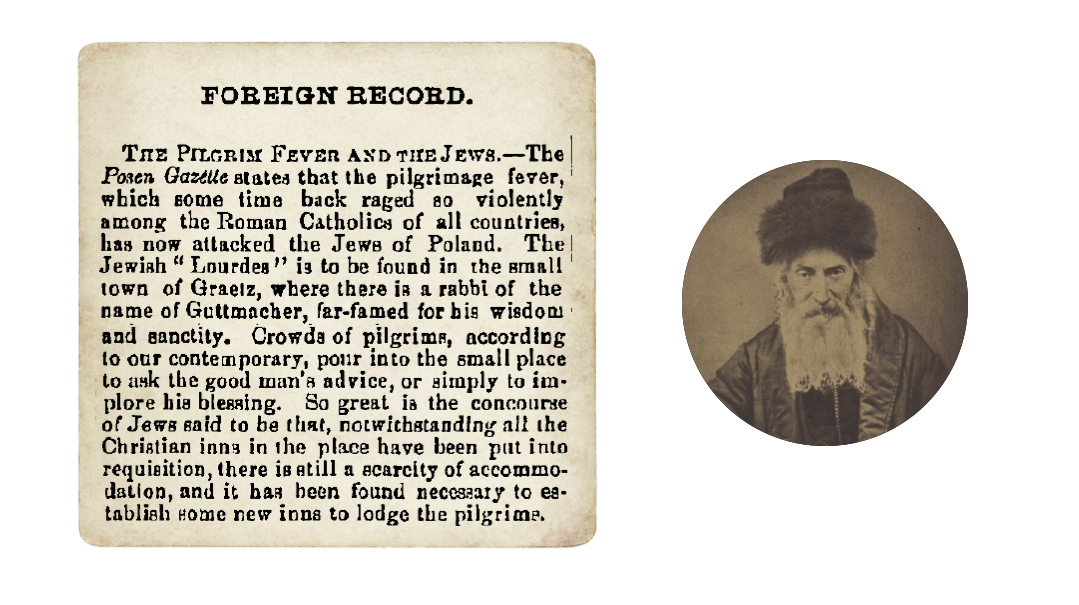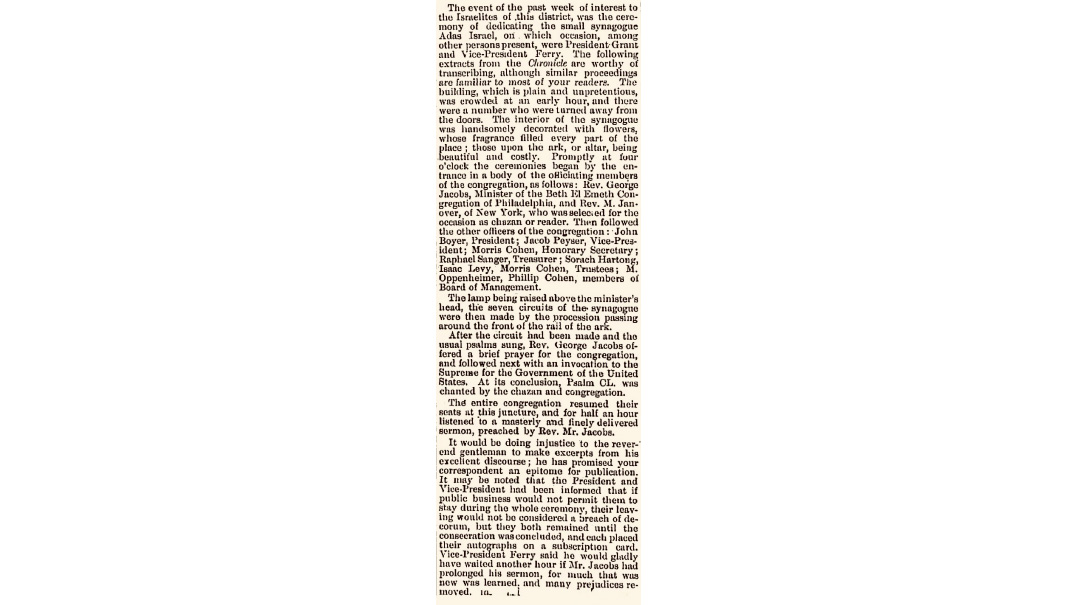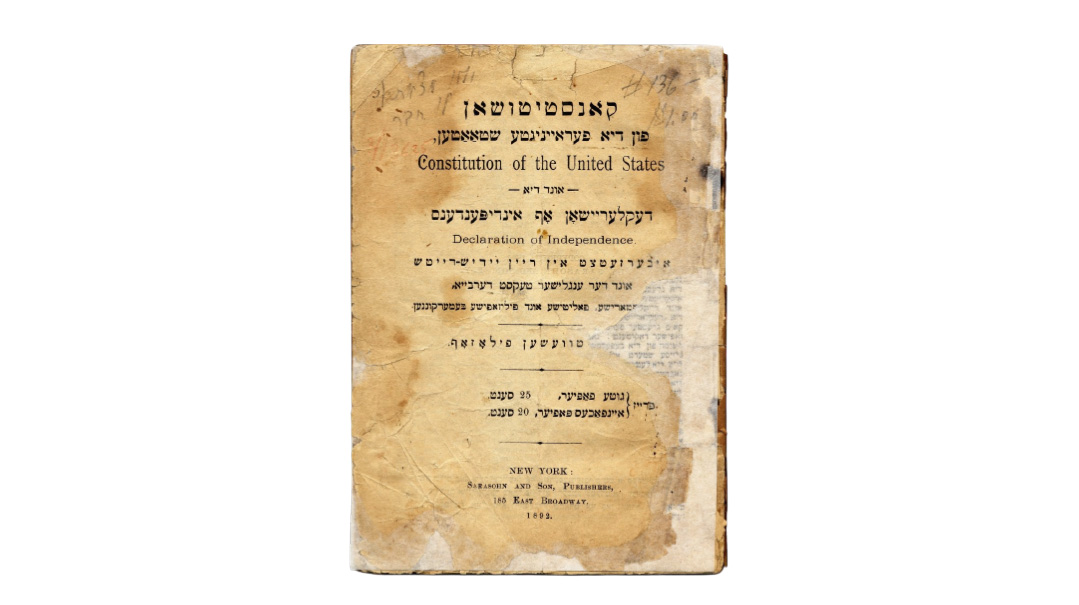Once Upon a Kvittel
| January 23, 2024No other kvittlach collection of this size and scope is known to exist

Title: Once Upon a Kvittel
Location: Grodzisk Wielkopolski, Poland
Document: The Israelite
Time: 1874
Akiva ben Kasa, for Torah and worship and health and livelihood and success. He earns his living as a tavern and innkeeper. Business was always meager, but he was content with his portion because he had time to study Torah. But now forces have risen up against his line of work, and it is not enough that they have lessened his livelihood, but they have also reduced his Torah study because of his diminished means. Also, he has to pay off several debts, which are as cruel as snakes and ravens.
—Kvittel submitted to Rav Eliyahu Guttmacher; YIVO collection
Community rabbi, Torah scholar, author of acclaimed holy works, posek, kabbalist, mystic, pioneering proponent of renewing Jewish settlement in the Land of Israel, Rav Eliyahu Guttmacher (1796–1874) was active in multiple arenas over the decades of his rabbinical leadership. A curious aspect of his interaction with followers was discovered in 1932: a cache of more than 5,000 kvittlach in the Polish town of Grodzisk Wielkopolski (Gratz in German, Graditz in Yiddish). The trove was deposited then at YIVO in Vilna; it somehow survived the war and is now stored in YIVO in New York.
No other kvittlach collection of this size and scope is known to exist. Despite his not being a chassidic rebbe of any sort — he was actually a German rabbi — he received petitions from all over, although most came from Eastern Europe. This incredible resource provides a window into the everyday lives of the men and women who comprised 19th-century Eastern European Jewry. It provides intimate details of family life, economics, how people related with non-Jewish surroundings, taxes and government, inter-Jewish politics, and religious life.
Not surprisingly, the most frequent requests mention banei, chayei, mezonei (offspring, health, and financial security): childbirth, infant mortality, shidduchim, marriage, paying for weddings, marital strife, divorce, and interactions with non-Jewish or Jewish business competitors.
There are also fascinating tidbits about Jewish social life. There are kvittlach from women complaining about their husbands’ alcohol consumption, asking the tzaddik what can be done about this corrosive habit; kvittlach describing medical problems such as infertility, mental illness, and other ailments, and occasionally mentioning doctors and cures previously suggested by Rav Guttmacher; petitioners facing debts, angry creditors, and increased competition from non-Jews seeking the tzaddik’s advice and blessings.
There are several kvittlach from melamdim unsatisfied with their profession who wished to transition into shechitah or other klei kodesh. Because mid–19th century Polish Jewry was confronting the challenges of modernity, many requests involve the military draft, while others express fears about early secularization and developing laxity in religious observance in their towns.
Kvittlach came to Rav Eliyahu Guttmacher from across the Jewish demographic spectrum. The first Amshinover Rebbe, Rav Yaakov Dovid Kalish, the oldest son and successor of Rav Yitzchak of Vurke and one of the great leaders of Polish chassidus, submitted one in which he asked for heavenly assistance in alleviating the plight of Polish Jewry. He was following in the footsteps of his father, who engaged in shtadlanus and often interceded with political functionaries on behalf of Jews. What’s interesting about the kvittel is that such a prominent chassidic leader submitted it to a renowned non-chassidic tzaddik to daven for his success.
Of interest are the kvittlach submitted by women — among them agunos, widows, and the poor —covering a range of issues. There are even some from nonreligious Jews requesting that the tzaddik intervene with Hashem on their behalf. Some kvittlach came from Western Europe and even from the US.
Rav Eliyahu Guttmacher lived his entire life in an area that was annexed to Prussia during the Polish partitions of the late 18th century. Having studied for several years in Poznan under his rebbi, Rav Akiva Eiger, with whom he enjoyed a close relationship, he subsequently assumed rabbinical positions in the area, before being appointed rabbi of Graditz, where he remained for 35 years until his passing. He authored many important Torah works that are still published and studied today.
In addition, he engaged in the study of Kabbalah, and gained renown as a miracle worker, which eventually brought petitioners from far and wide seeking his assistance and his amulets. His kever has recently been located, so kvittlach can once again be submitted, and prayers recited at his gravesite.
Prolific Author
Rav Guttmacher had a prodigious scholarly output, authoring chiddushim on Mishnayos and Talmud Bavli and leaving many halachic responsa. He published Tzafnas Paneach on the aggadeta of Bava Basra, and Succas Shalem on hilchos aveilus. He wrote several additional seforim on Jewish thought and Chumash. Many of his popular seforim have been republished in recent years, with some of his writings being printed for the first time.
Proto Zionist
Along with his close friend and fellow talmid of Rav Akiva Eiger, Rav Tzvi Hirsh Kalischer, Rav Guttmacher was one of the mevasrei Tzion, who promoted Jewish resettlement of the Land of Israel. His study of Kabbalah had a messianic streak, which led him to the conclusion that he must encourage Jews to move to Eretz Yisrael to hasten the redemption. He assisted Rav Kalischer with fundraising for early settlements such as the agricultural school Mikveh Yisrael. In Yerushalayim, Rav Guttmacher established a chaburah of mekubalim called Shenos Eliyahu, and two yeshivos, Succas Shalom and Meor Yaakov, fundraising for these institutions as well.
The research and writings of Professors Marcin Wodzinski, Glenn Dynner, and Eliezer Brodt were utilized in the preparation of this article.
(Originally featured in Mishpacha, Issue 996)
Oops! We could not locate your form.







